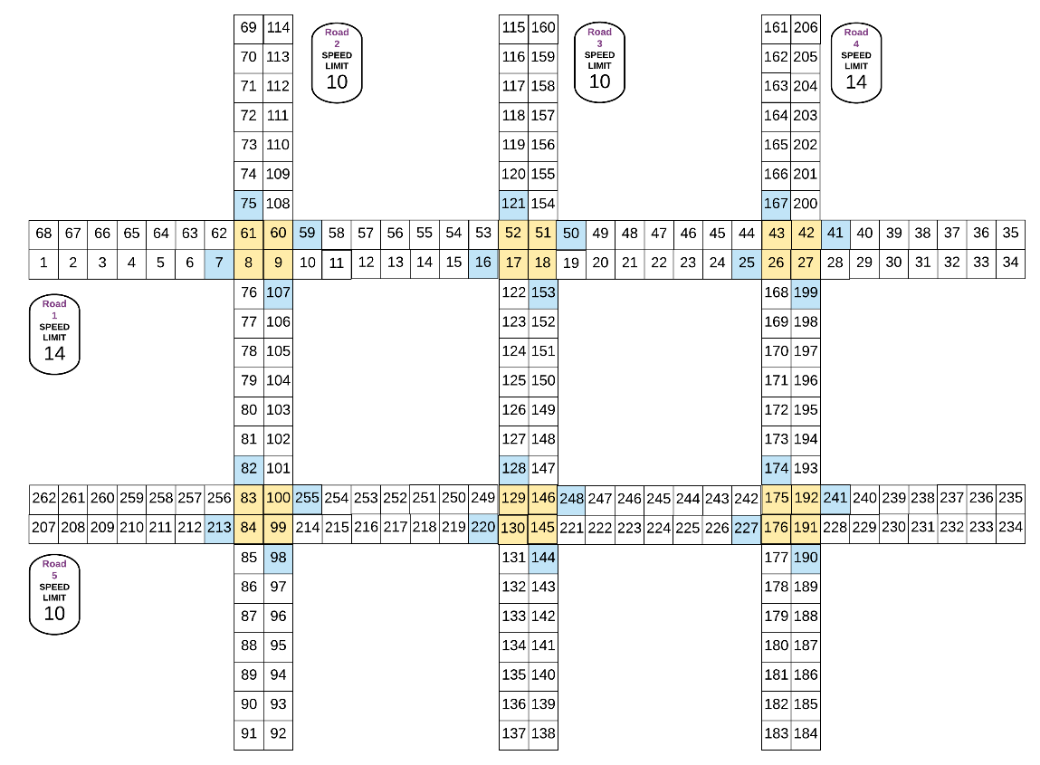Research Brief: Operations Research, Sustainability
Project Brief
Type of Research: Operations Research, Sustainability
Motivation for Research: Increasing the efficiency of transportation systems is key to fostering sustainable urban development because it can decrease urban pollution levels, better meet the social demands of its residents, and decrease vehicle fuel consumption – encompassing the three pillars of sustainability: social, environment, and economic.
Research Approach
The coordination of stoplight timing has the potential to mitigate not only traffic-related congestion, but also traffic-related emissions. An acceleration following either a deceleration or a complete stop due to a red light that has turned green is responsible for significantly more carbon dioxide (CO2) emissions than cruising at a constant speed when approaching a green light. Depending on the sequences of the traffic lights and the flow of traffic, the lights can both cause and relieve congestion, but they can have a negative impact on emissions due to their effect on vehicles’ acceleration and deceleration.
Jessica explores three stoplight timing policies for their effect on vehicle emissions for random traffic scenarios on a given downtown area. Traffic is modeled using a variation of a cell transition model to capture traffic as density-dependent flows. The study assumes 100% penetration of vehicle autonomy. It also assumes availability of vehicle-to-infrastructure (V2X) technology, which includes vehicle-to-vehicle (V2V) communication of the vehicles’ locations and speeds as well as communication with other network infrastructure such as traffic lights. These vehicle assumptions aid in the simplicity and accuracy of the cell transmission model application. The study compares the performance, as captured on the total emission levels of traffic controlled by three stoplight timing policies: a conventionally timed traffic light system, a system with traffic flow-dependent lights, and a light-less system.
Key Findings

- A light-less traffic system is the one with the lowest level of emissions.
- Lengthier distance between intersections combined with less variable speed limits and uncongested traffic systems induce lower emissions, as create systems with lower vehicle accelerations.
- Synchronizing traffic light flows to minimize accelerations in a traffic map can induce lighting sequences that reduce speed variability.
- Dynamic traffic light sequencing should not focus only on one street. V2X communication should help coordinate an area of influence.
- Determining the right area of influence for a traffic light is still an unresolved problem.




